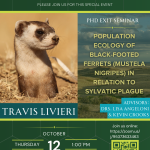In terms of genome size, humans are ordinary. With an estimated genome size of about 3.2 Gb, Homo sapiens are comparable to other model organisms like mice (~2.5 Gb) and zebrafish (~1.4 Gb). Meanwhile, salamander genomes span an extraordinary range from 10 to 120 Gb. This has many evolutionary implications. For example, a positive correlation between genome size and cell volume has been observed. So called “genomic giants” not only have larger genomes, but their cells are larger as well – in some cases large enough to be seen with a magnifying glass alone. On the one hand, surprisingly little is known about the impact of increasing cell volume on random fluctuations, or noisiness, in cellular processes. On the other, it is well understood that increasing genome and cell size slow the tempo of cellular processes, and of embryonic development, yet the driving mechanisms remain poorly understood. In my research, I use mathematical models to (i) elucidate the understudied relationship between cell volume and noise, and to (ii) suggest mechanisms through which increasing genome size and cell volume act to slow cellular and developmental processes. The beloved model salamander, the Axolotl (Ambystoma mexicanum), with an estimated genome size of about 32 Gb, acts as our “genomic giant” in these models. Results suggest that longer transcriptional and nuclear export times act to slow cell and developmental processes down as genome size and cell volume increase.



